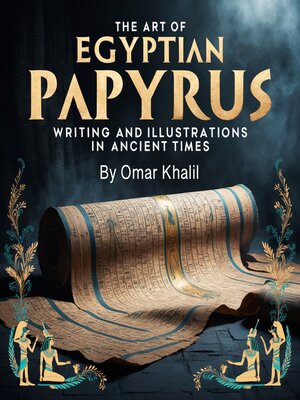The Art of Egyptian Papyrus
audiobook (Unabridged) ∣ Writing and Illustrations in Ancient Times
By Omar Khalil

Sign up to save your library
With an OverDrive account, you can save your favorite libraries for at-a-glance information about availability. Find out more about OverDrive accounts.
Find this title in Libby, the library reading app by OverDrive.



Search for a digital library with this title
Title found at these libraries:
| Library Name | Distance |
|---|---|
| Loading... |
Papyrus, one of the most important inventions of ancient Egypt, was central to the development of writing and documentation in the ancient world. The history of papyrus dates back to the early dynastic periods of Egypt, around 3000 BCE, when the first examples of papyrus usage were recorded. This plant, which grew abundantly along the Nile River, was harvested for its stalks, which were then processed into sheets that served as a writing surface. The creation of papyrus revolutionized communication in the ancient world, providing a portable, durable, and practical alternative to other materials like stone or clay tablets.
The origins of papyrus as a writing material can be traced to the need for a flexible and lightweight medium that could be used for documentation, record-keeping, and artistic purposes. Ancient Egyptians discovered that the inner pith of the papyrus plant could be cut into strips and laid in a crisscross pattern, pressed together, and dried to form sheets. These sheets were then smoothed and polished, making them suitable for inscribing with hieroglyphs, hieratic script, or later, the demotic script. Over time, the process of papyrus production became more refined, and its use spread to neighboring regions, influencing other ancient civilizations.
Early uses of papyrus were predominantly for religious and administrative purposes. Royal decrees, religious texts, and tomb inscriptions were often written on papyrus scrolls. As Egyptian society advanced, the role of papyrus expanded to include personal letters, legal documents, and works of literature, cementing its place as the primary medium for writing in the ancient world. The papyrus scroll became the preferred format for long documents, with scrolls of varying lengths used to record everything from medical texts to astronomical observations.







